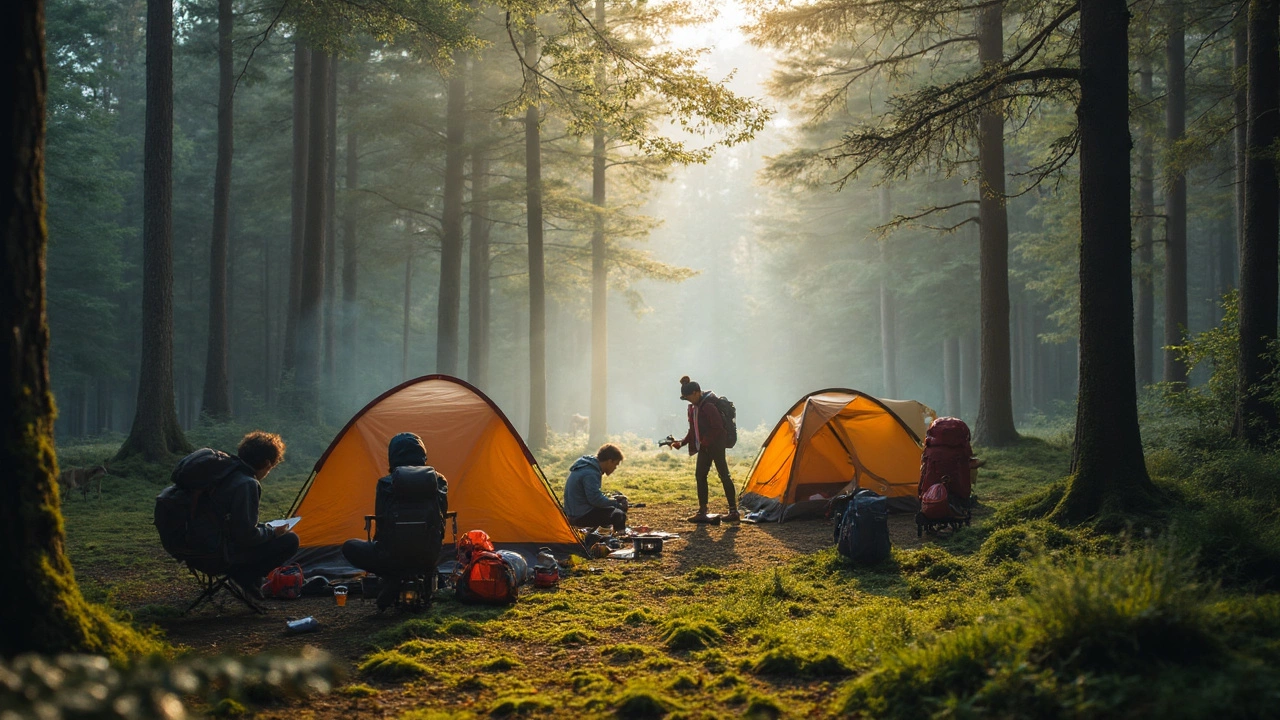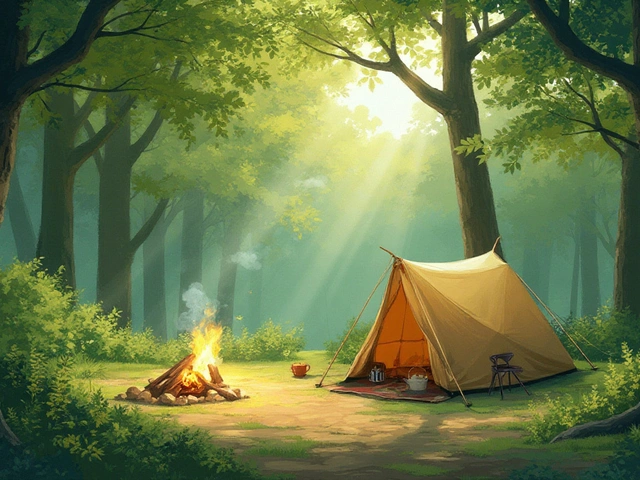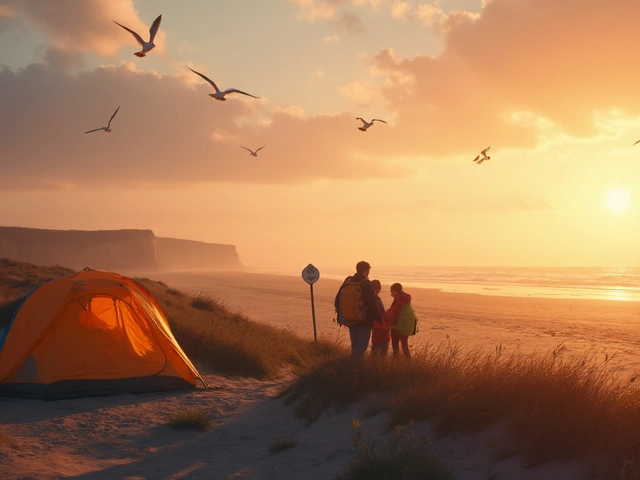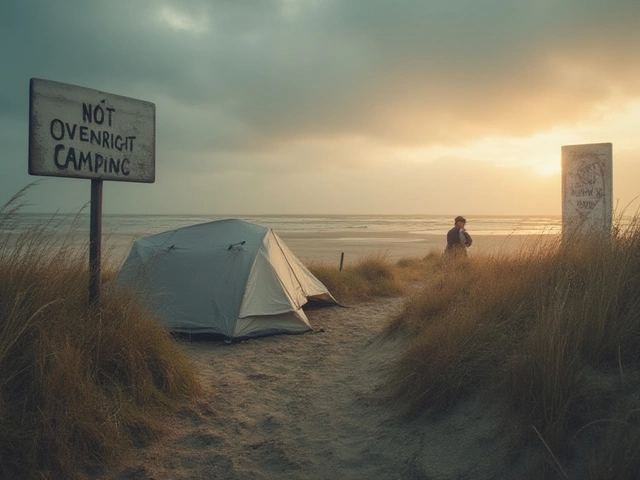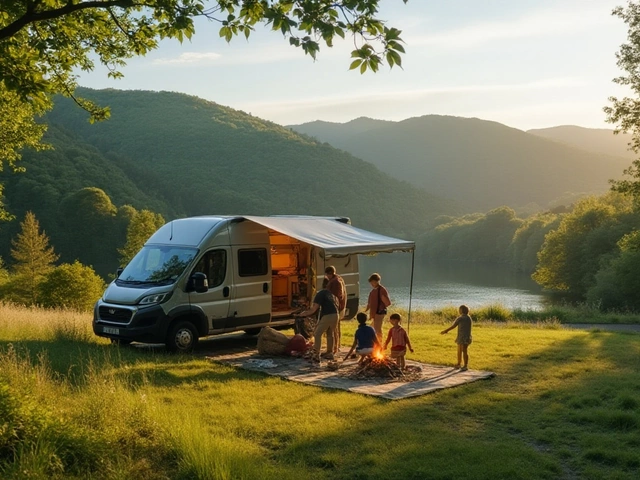You don’t need a private campground to camp out in Virginia. National Forest land is way more flexible, and there’s a lot of it—two big ones are George Washington and Jefferson National Forests. If you ever wanted to pitch your tent somewhere with real trees, running water, and actual wildlife, this is your spot. And yeah, it’s legal, but there are a few details that catch people off guard.
If you just want to wander in and set up a tent—good news: dispersed camping is not only allowed in most places, but also free, as long as you follow the rules. There’s no “check-in” office for most spots, and you’re not sharing space with RVs blasting their generators all night. But before you grab your pack and rush out, you’ll want to know where you actually can’t camp—like right by developed recreation areas, or anywhere signs say, “No Camping.”
You do need to pay attention to fire restrictions and leave-no-trace guidelines. These forests aren’t your backyard—bears are a real concern, and the weather in spring can flip in an hour. Want an even better tip? Most folks drive right past the prettiest, most peaceful campsites just because there’s no picnic table. Don’t be that person—sometimes the best experiences are found a mile or two down a dusty forest road.
- Where Can You Camp in VA’s National Forests?
- Understanding the Rules—What’s Allowed and What Isn’t
- Fees, Permits, and Reservations: How It Works
- Best Places and Hidden Gems for Forest Camping
- Tips to Stay Safe and Make the Most of Your Trip
Where Can You Camp in VA’s National Forests?
Figuring out where you can actually camp in Virginia’s National Forests is big if you want to avoid a brush with a ranger or getting a ticket. There’s a ton of space: George Washington and Jefferson National Forests together cover over 1.8 million acres. That’s about the size of Delaware and Rhode Island combined. So yeah, you’ve got options.
The cool part is you’ve got two main ways to camp: designated campgrounds and dispersed camping. Designated campgrounds are easy to find, usually listed on the National Forest website. They’ve got picnic tables, toilets, and fire rings. These spots can fill up in summer and weekends. Some are first-come, first-served, others take reservations. Expect to pay a fee in these areas.
Dispersed camping just means camping away from developed sites. You can set up your tent in most areas, as long as you’re 200 feet from any water source and at least a quarter-mile away from developed sites, roads, or trailheads. No amenities, pure nature, and usually free. But always double-check for “No Camping” signs—some spots are off-limits to protect wildlife or because of restoration work.
- Stay at least 200 feet from streams or lakes to protect water quality.
- Keep your group small (usually under 10 people).
- Don’t camp near trailheads, roads, or where signs say otherwise.
- Some areas, like wilderness study zones or high-use spots (think Dragon’s Tooth Trail or Stony Man Mountain), have banned or restricted camping because of crowding or ecological damage.
Here’s a quick look at the main National Forests in Virginia where people camp the most:
| Forest Name | Size (Acres) | Popular Camp Areas |
|---|---|---|
| George Washington National Forest | 1,060,000 | Ramsey's Draft, Sherando Lake, Big Schloss |
| Jefferson National Forest | 828,000 | Mount Rogers, Cave Mountain Lake, Whitetop Mountain |
One thing to remember: rules can change with the seasons, fire danger, or wildlife breeding times. It pays to check the Forest Service website or call a ranger station before you go. That way you’re not the one driving around at midnight, looking for anywhere to set up a tent.
For the real adventure, some folks hit backroads and gravel forest roads with a map (don’t rely just on your phone signal out there) and find sweet spots no one else knows about. Just remember, the camping is for everyone, so leave your spot better than you found it.
Understanding the Rules—What’s Allowed and What Isn’t
There’s a lot of freedom when you head out to camp on Virginia’s National Forest land, but you can’t just throw down a tent anywhere or do anything you want. The big thing is knowing the difference between dispersed and developed camping. With dispersed camping, you can set up pretty much anywhere that isn’t marked off-limits, but developed sites have set rules and usually a fee.
First off, if you’re more than 300 feet from a trailhead or water source, you’re usually good to go. But don’t camp within 200 feet of any stream or river. This isn’t just about respect for nature—it helps protect the water and animal life. Oh, and if you see a ‘No Camping’ sign, believe it. Rangers do check, especially in the busy season.
Fires are allowed in most places, but only if there’s no fire ban. In dry months, fire restrictions pop up all the time. Use existing fire rings if you find them and never leave your fire burning when you’re not there. Bringing your own firewood? Make sure it’s local, to avoid spreading pests.
- Maximum stay is 21 days at one spot. After that, you have to move at least five miles if you want to set up again.
- No digging trenches or building new fire pits. Stick to what’s there.
- Pack out everything you bring in, including food scraps and trash. Don’t bury or burn trash—it doesn’t break down the way you’d hope.
- Pets are allowed, but they need to be under control at all times.
- If you’re in a group larger than 75 people, you need a special permit.
One more thing—don’t expect cell service and don’t cut live trees. It sounds obvious, but every year, someone tries to hack down a sapling for firewood and gets fined for it. Most importantly, don’t forget camping on this land means following their leave-no-trace rule: leave it cleaner than you found it if you can.
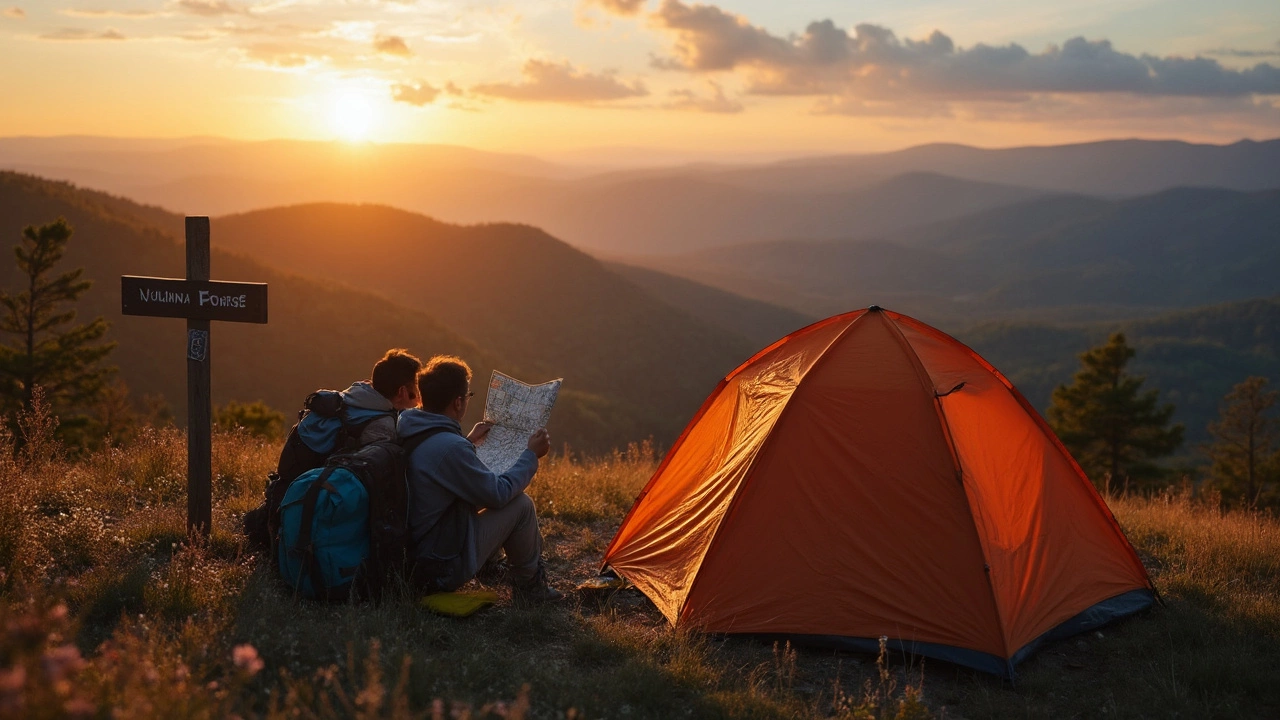
Fees, Permits, and Reservations: How It Works
When it comes to camping in National Forest land in Virginia, the money question is simple: most dispersed camping on public forest land is absolutely free. No hidden charges, no sneaky fees. If you want to camp in an official campground with bathrooms and maybe a picnic table, then you’ll need to pay. But if you head out into the woods—also called dispersed camping—it’s usually just you, your gear, and maybe a couple of wildlife neighbors.
If you’re thinking of showing up at developed spots like Sherando Lake or Cave Mountain Lake, be ready to pay nightly fees. Those usually run from $10 to $25 per night, depending on the amenities. Reservations are recommended at popular places during weekends and holidays. You can book these through Recreation.gov easily.
Permits are rarely a hassle. For basic camping, you don’t need one. But there are a few exceptions:
- Groups over 75 people need a Special Use Permit—most folks never deal with this.
- If you plan to camp near popular fishing areas, some require a day-use fee—watch for signs and check the Forest Service website first.
- Backcountry zones that are closed for restoration or have special wildlife rules will have posted warnings or online notices.
Here’s how the costs and permits stack up for the most common situations:
| Type of Camping | Reservation Needed? | Fees | Permit Required? |
|---|---|---|---|
| Dispersed Camping | No | Free | No |
| Developed Campground | Sometimes (recommended for busy weekends) | $10–$25/night | No |
| Group over 75 campers | Yes | Varies | Yes (Special Use Permit) |
One overlooked detail: some Forest Service roads have seasonal gate closures to protect the area or during fire risk. Always check quick updates online before picking your site. And remember, a simple parking pass or day-use fee might pop up if you’re near trailheads, but most campers never have to mess with it. The best bet? Snag your spot early and don’t overthink the process. The camping rules are pretty friendly for anyone ready to adventure in Virginia’s forests.
Best Places and Hidden Gems for Forest Camping
If you ask regulars where to find top spots for camping in Virginia’s National Forests, you’ll hear a bunch of different answers. Most folks start with the big names, but the secret is that there are loads of low-key spots waiting to be found. Let’s break down a few of the best-known sites and a couple of hidden corners locals swear by.
Classic Popular Spots
- Virginia Creeper Trail (Mount Rogers NRA): This spot is famous for biking, but it’s also a hiker’s camp dream. There are backcountry sites just steps off the main trail, plus official campgrounds like Grindstone if you want a flush toilet nearby.
- Sherando Lake Recreation Area: It’s nicknamed the "jewel of the Blue Ridge." Easy lake access, roomy campsites, and both tent/RV setups. Arrive midweek to actually get a spot in peak season.
- Big Schloss and Wolf Gap: For great views and fewer crowds. A short hike from Wolf Gap brings you to primitive campsites on the ridge, with killer sunrise views.
- Lake Moomaw (Bolar Mountain): This one’s tucked away near the West Virginia border. The lake is super clear, and you can paddle or fish right from your camp.
Lesser-Known Gems
- Little Stony Creek (near Cascades): Ignore the crowds at the main falls—give the side trails a shot. There are several legal flat spots to set up after a short hike, and you’ll fall asleep to the sound of water, no traffic in earshot.
- FR 95 Off Va 311 (Craig Creek area): Most campers don’t realize you can drive multiple miles down forest roads and find clearings with fire rings and rock-creek swimming holes. This area rarely fills up, even on busy weekends.
- Peters Mountain Wilderness: It's remote, so you’ll likely be alone or sharing the whole ridge with deer. Hard to access, but the reward is a view most folks never see.
Comparison Table – Popular vs. Hidden Spots
| Spot | Type | Crowds (1-10) | Ease of Access | Cell Signal |
|---|---|---|---|---|
| Sherando Lake | Developed | 8 | Easy – Paved | Good |
| Big Schloss | Primitive | 4 | Short Hike | Spotty |
| Lake Moomaw | Developed/Primitive | 6 | Gravel Road | Weak |
| Little Stony Creek | Dispersed | 2 | Trail Access | No Signal |
| Peters Mountain | Wilderness | 1 | Backcountry | No Signal |
One pro tip—always check for current road closures and fire restrictions. Some of these forest roads get washed out after heavy rain, and cellphone coverage can be a joke the deeper you get. Print out a map or download it to your phone before you lose service. If you want to avoid big crowds (and you actually want to hear the wind in the trees), aim for the midweek, or roll in just after peak season winds down in early fall.
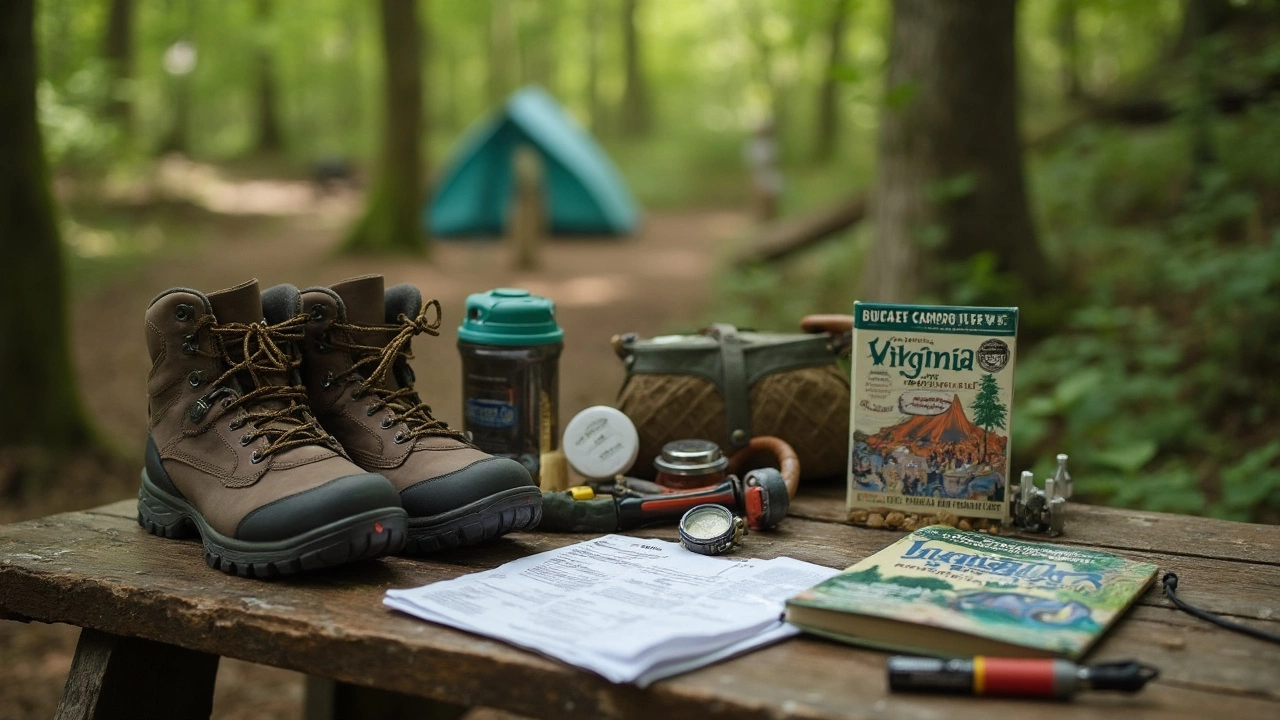
Tips to Stay Safe and Make the Most of Your Trip
Virginia’s National Forests are huge. It’s easy to think you’re totally alone until the weather turns or a bear pays a late dinner visit. Here’s how to stay safe and actually enjoy your trip—without learning any lessons the hard way.
- Camping away from trails and water sources is smart. Rangers suggest at least 200 feet from lakes and rivers, so you don’t disturb wildlife or pollute the water.
- Bear canisters aren’t just recommended—they make a difference. A pile of shredded food wrappers at a popular spot a few years ago led to an actual bear closure for miles. Keep all scented stuff in a canister or hang your food ten feet off the ground and four feet away from tree trunks, especially in the George Washington National Forest where black bears are common.
- Check the fire restrictions. In dry summers, even a forgotten campfire can cause problems—like the 3,200-acre wildfire in Jefferson National Forest back in 2017.
- If you’re hiking or setting up at elevation, bring layers and a rain jacket. Even in July, nights up on the Blue Ridge can dip below 50°F.
- Travel with a paper map or downloaded offline maps. Cell service drops to zero in surprising places, especially near the West Virginia border.
- Leave your plans with someone at home. Search and rescue teams in these forests respond to dozens of lost hiker calls every year. Most are found the next morning, but you don’t want to spend a night lost in the rain.
- Water from streams and springs looks clean, but filter or boil everything. Giardia isn’t a fun souvenir, and several cases pop up every summer near popular campsites along the Appalachian Trail.
Here are some stats that drive home just how common a few of these issues really are:
| Issue | Average Incidents/Year (GW & Jefferson N.F.) |
|---|---|
| Bear Encounters (food-related) | 20+ |
| Lost or Overdue Campers | 30-40 |
| Search & Rescue Deployments | 15-20 |
| Unattended Campfires Reported | 50+ |
Last thing: respect the quiet. Plenty of folks head to these forests to get away from noise. Crank your music or leave trash around, and you haven’t just blown your own trip—you’ve ruined it for everyone else. Treat the place like it’s your grandmother’s living room, and you’ll help keep these wild spots open for actual wild adventures.
